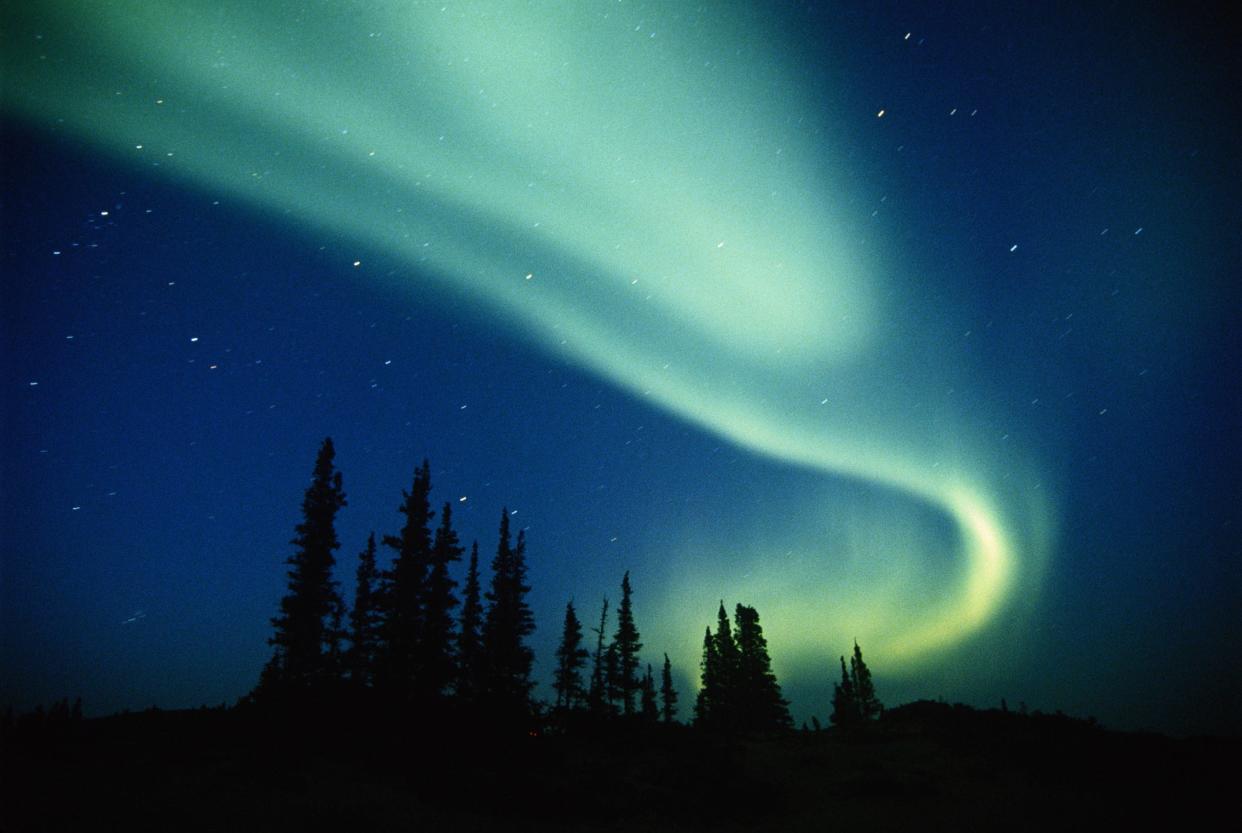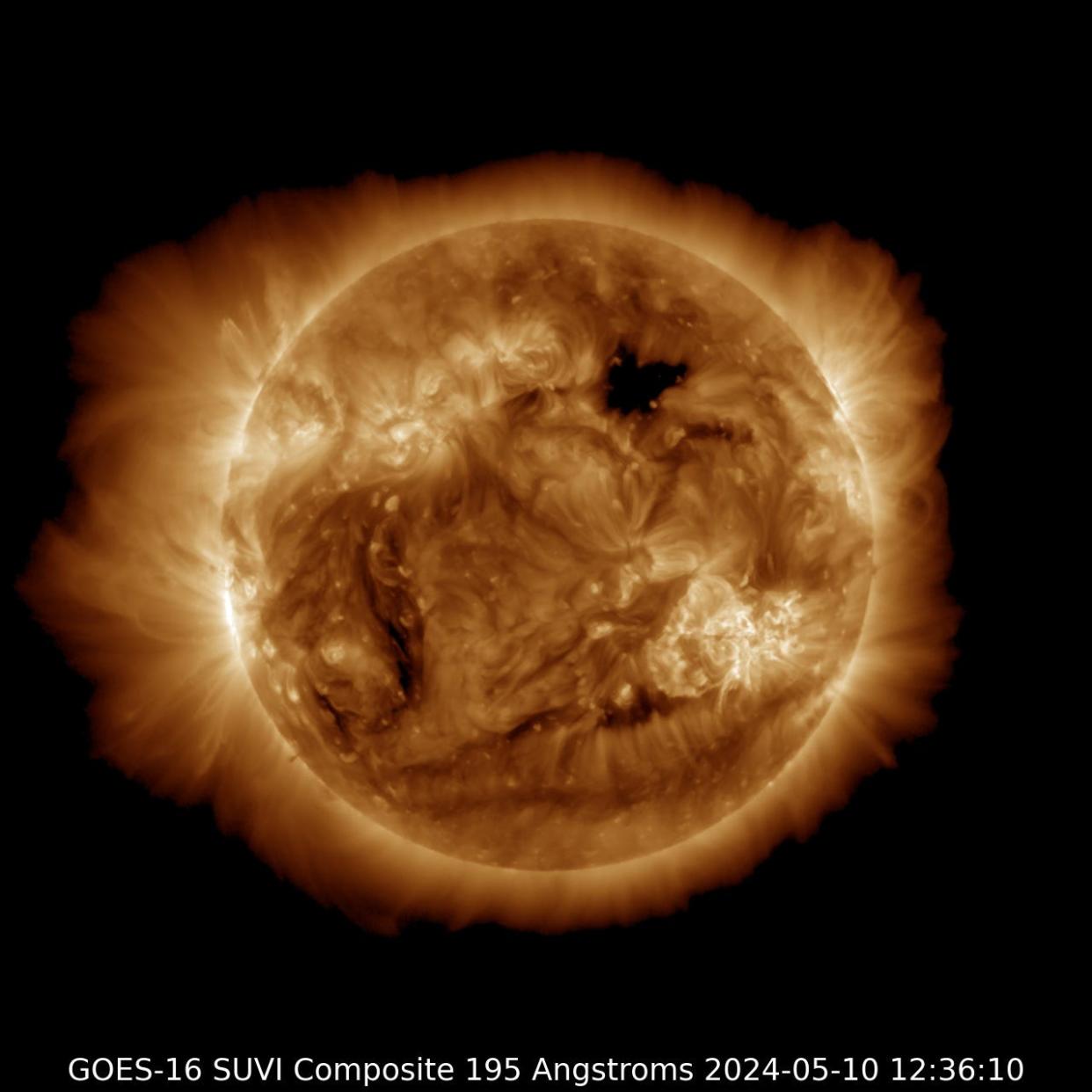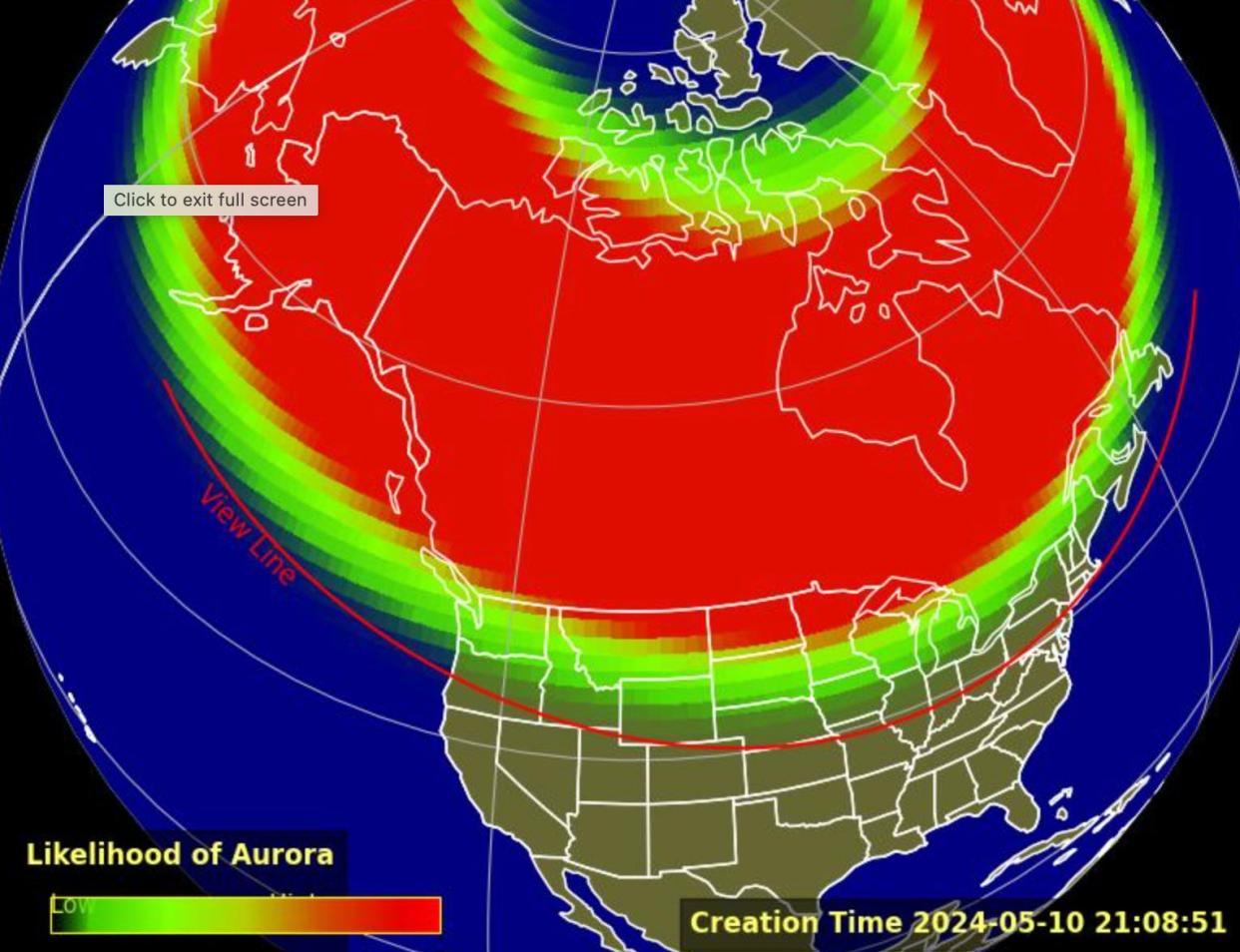The first severe solar storm in 20 years could spark auroras across the US

A stunning aurora may light up the northern US and potentially southern states on Friday.
That's thanks to an erupting sunspot that's seven times the size of Earth.
US states as far south as Alabama could see the auroras Friday night.
For the first time in 20 years, the National Oceanic and Atmospheric Administration has issued a G4 geomagnetic-storm warning.
The storm could generate a dazzling display of the northern lights farther south than usual on Friday.
G4s are the second-strongest type of solar storm. They've been known to cause radio blackouts and power-grid outages, but experts don't expect these approaching ejections to cause any trouble, Mathew Owens, a professor of space physics at the University of Reading, and Alex Young, the associate director for science at NASA's Heliophysics Science Division, told Business Insider.
The best time to see the aurora borealis is typically between 10 p.m. and 2 a.m. local time, because this is when it will be the most active, according to NOAA.
The upcoming aurora is largely the result of a giant, hyperactive sunspot called AR3664 — which is seven times the size of Earth — that's been producing powerful eruptions called coronal-mass ejections for the past few days.
"With the eruptions from this group, I think we're going to see some really good auroras. I wouldn't expect too many really bad effects," Owens said.
Powerful eruptions like these can hurl high-energy solar particles toward Earth that interact with our magnetic field to create the northern and southern lights.
The aurora borealis is typically contained in the uppermost region of the Northern Hemisphere. But when Earth receives a more powerful blow of these high-energy particles, it can cause auroras over a larger portion of the planet.
Over the past several days, AR3664 has grown to become one of the biggest and most active sunspots in our current solar cycle, which began in December 2019, Space.com reported.

And since May 8, AR3664 has spit out five coronal-mass ejections. These ejections are now speeding toward Earth at roughly 560 miles per second, Owens told BI.
Where auroras are forecast in the US

Since these oncoming coronal mass ejections have a relatively strong magnetic field, Friday's auroras are forecast to make a rare appearance.
They could stretch all the way down from northern states like Montana, Minnesota, and Michigan to as far south as Alabama, per reports from the University of Alaska Fairbanks. NOAA's forecast shows the aurora won't reach quite as far south as Alabama but will still be visible from states like Illinois and Ohio.
"The reality is that we just won't know how bright, active, and wide-reaching the aurora will be until the coronal-mass ejections reach Earth's atmosphere," Young said. Even experts' estimates of when they'll arrive offer only a rough ballpark.
"Our timing estimates may be way off," Owens said.
To watch the auroras on Friday, head to NOAA's space-weather website for the latest forecast to see if they'll be visible near you.
Then, step outside once it's totally dark and look up. If you're lucky, you may get to see this spectacular sight.
Correction — May 10, 2024: An earlier version of this story misattributed information and a quote to Andrew Gerrard of the New Jersey Institute of Tech. The most extreme estimate of aurora and where they can be seen in the US came from Alex Young.
Read the original article on Business Insider
